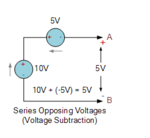welove8051
Full Member level 6
hi, what are the challenges/possibilities to design the below circuit.
V1 is a 12V battery source. r1 is power resistor with value less than 1 ohms(based on requirement). V2 is the electronic circuit (using FET or OPAMP etc) with its own operating supply. V2 is always less than V1 so current flows from V1 to V2 all the time. the operation of circuit is that V2 will create a opposing voltage to V1 so that the current flown in the circuit through V2 is given by (V1 - V2)/r1. V2 should have the ability to pass current in the range of 15A continuous current.
the hard part here is that the V2 power supply can source current only for its operation and hence the current flown in the circuit should be supplied by V1 and pass through r1 and V2 back to his ground.

thanks.
V1 is a 12V battery source. r1 is power resistor with value less than 1 ohms(based on requirement). V2 is the electronic circuit (using FET or OPAMP etc) with its own operating supply. V2 is always less than V1 so current flows from V1 to V2 all the time. the operation of circuit is that V2 will create a opposing voltage to V1 so that the current flown in the circuit through V2 is given by (V1 - V2)/r1. V2 should have the ability to pass current in the range of 15A continuous current.
the hard part here is that the V2 power supply can source current only for its operation and hence the current flown in the circuit should be supplied by V1 and pass through r1 and V2 back to his ground.

thanks.

